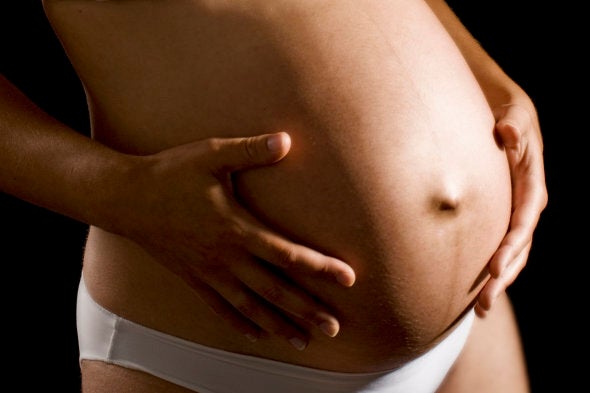
So you're pregnant, and you're waiting for that gorgeous glow to set in – but instead you're finding that various parts of your body are mysteriously changing hue. Don't worry, it's all part of the crazy pregnancy process...
What is it?
Chloasma (sometimes called melasma) is the medical name for the darkening of the skin. This hyper-pigmentation is very common indeed during pregnancy (to varying degrees) and it might be one of the first pregnancy symptoms you experience. Sometimes the condition is referred to as 'the mask of pregnancy' because it can appear on the face, in very odd-shaped 'splashes'. If you have freckles and moles, these may intensify in colour somewhat, as well, but it's not only the face which is affected.
The darker skin patches can occur all over the place, and there are some specific areas which are likely to change. Your nipples will probably darken a shade or two. As your pregnancy progresses, you're also likely to notice a vertical brown line, stretching all the way down your abdomen through your belly button (this is called the linea nigra). And, er, 'down there' doesn't get off lightly, either. The vulva often gets darker during pregnancy.
Your pregnancy hormones are behind all the skin changes, as if you hadn't guessed. The hormones temporarily stimulate an increased production of melanin, the substance which gives colour to your skin, hair and eyes.
Chloasma tends to be more noticeable in women with darker skin, although very fair-skinned women can suffer from it too. In most cases, the patches will slowly fade in the months after delivery of the baby. Very occasionally the patches persist, but this is rare.
What can I do?
It seems that some people have a genetic predisposition to chloasma (and it might intensify with each pregnancy), but there are some things you might be able to do to minimise it.
A deficiency in folic acid has been linked to the condition – therefore, take your supplements up until the 12th week of pregnancy and, even better, consistently eat foods which are rich in the substance. These include dark green leafy vegetables and whole grain breads and cereals.
While darker nipples and belly stripes are unlikely to cause you too much worry, dark patches on your face might make you feel self conscious, understandably.
Although there is nothing you can do to get rid of them (you just have to wait it out, and they'll probably go shortly after you give birth), you can reduce the risk of the patches intensifying.
Your hyper-pigmentation will become even more hyper in the sunshine. Therefore, you should wear a high factor sunscreen, even when it's not scorching hot – you need one which protects you from both UVA and UVB. Also, avoid spending any length of time in the sun – when you are outside, keep covered up, with a wide brimmed hat and long sleeves.
You might be able to minimise the appearance of dark face patches with a tinted moisturiser. It's not ideal, but with practice you should be able to blend the blotches so they become less noticeable.
Occasionally, chloasma persists even after the baby has been born. If you your patches don't seem to be fading in the weeks and months after birth, you can visit your GP. It might be that you are taking contraception which is contributing to it (and therefore needs changing). If not, your doctor might refer you to a dermatologist for further advice.
What else could it be?
There are many skin changes that are common during pregnancy, but there is a chance that some skin changes could be unrelated. if you have a patch of skin that becomes suddenly darker or redder, feels tender or painful, you should go and see your doctor. If you notice any unusual changes to a mole, you should also visit your GP.
More on Parentdish